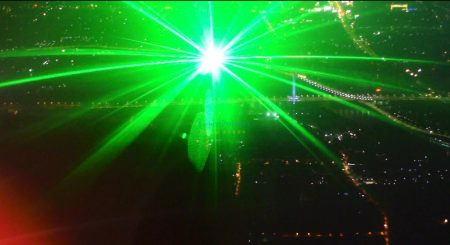In the medical field, holographic interferometric technology solves many problems that are difficult to solve with other technologies with its unique advantages.
(1) In the diagnosis of ophthalmic diseases, laser holographic imaging technology can be used to provide three-dimensional images of the entire eye, and different positions of the entire eye image can be used with a microscope (eg, cornea, anterior chamber, lens, vitreous, retina, etc.) ) Conduct layer-by-layer observation and research. Laser holographic imaging techniques can also be used to provide individual three-dimensional images of each part of the eye for in-depth inspection. Laser holographic interferometry can accurately observe vitreous collapse, growth of vitreous cords, development of cataracts, changes in retinal edema, growth or shrinkage of melanoma, and small lesions of the cornea and corneal stress.
(2) Ultrasound detection is an important means in clinical diagnosis, but it is difficult to record and observe. Using laser holography, the ultrasonic wave passing through the body inspection site is applied to the liquid surface, and a laser beam is split into two beams, one beam is irradiated onto the liquid surface and reflected by the liquid surface to the camera, and the other beam is used as a reference. The light is directly directed onto the camera, so that the camera can record the interferogram with the acoustic hologram, and then the laser hologram can be obtained by laser reduction. This holographic diagnosis method can be used to detect breast cancer with a diameter of more than 1 mm, which is conducive to the early diagnosis and treatment of cancer.
(3) In 2001, the PLA Academy of Military Medical Sciences and the Navy General Hospital cooperated to develop a laser holographic random point stereo vision inspection instrument for pilot physical examination, which is the first of its kind at home and abroad.
(4) Three-dimensional computed tomography (CT) and magnetic resonance imaging (M RI), which are now widely used, are just the effects of portrait sketching. The true three-dimensional image is a holographic hierarchical partitioning two-step method to achieve the fault combination of the head magnetic resonance imaging film. In the first step, each of a group of magnetic resonance imaging sheets is recorded in different intervals of the holographic plate in the original interval and order to form a Fresnel hologram H1, and then the H1 is reproduced in the laser optical path system to obtain a real image. , for the second record, to obtain a set of three-dimensional perspective skull images that can be observed under ordinary incandescent lamps with clear, deep sense and no interference between the fault planes, for doctors to accurately and quickly determine the disease The location and location of the site provide an advantageous and reliable assistance.
(5) The double-ended fixed bridge is a commonly used prosthesis in oral prosthesis, and the stress and displacement changes after the force is very complicated. Double exposure holographic interferometry is used to measure the small displacement of the bridge abutment before and after the repair. It is not in contact with the experimental object, has high sensitivity, is intuitive, and can give a three-dimensional image of the whole field. Provide experimental basis for clinical repair design.
The laser holography technique described in the above (1), (2), and (3) has been matured in clinical use. The two laser holographic techniques (4) and (5) in the above description are being excessive to practical clinical diagnostic instruments. Among them, (4) the main problem is that the processing speed is slow, and the practical application is not convenient. The solution path tends to store all the magnetic resonance imaging images to be processed in a computer, and a two-dimensional image is sequentially outputted by the computer to a liquid crystal screen, and the liquid crystal screen is placed on the optical frame rail of the optical path system (replaced The original manual reset frame) is moved back and forth once and synchronized with the slit on H1 and can be automatically controlled.
Application and development trend of laser holography in medicine


